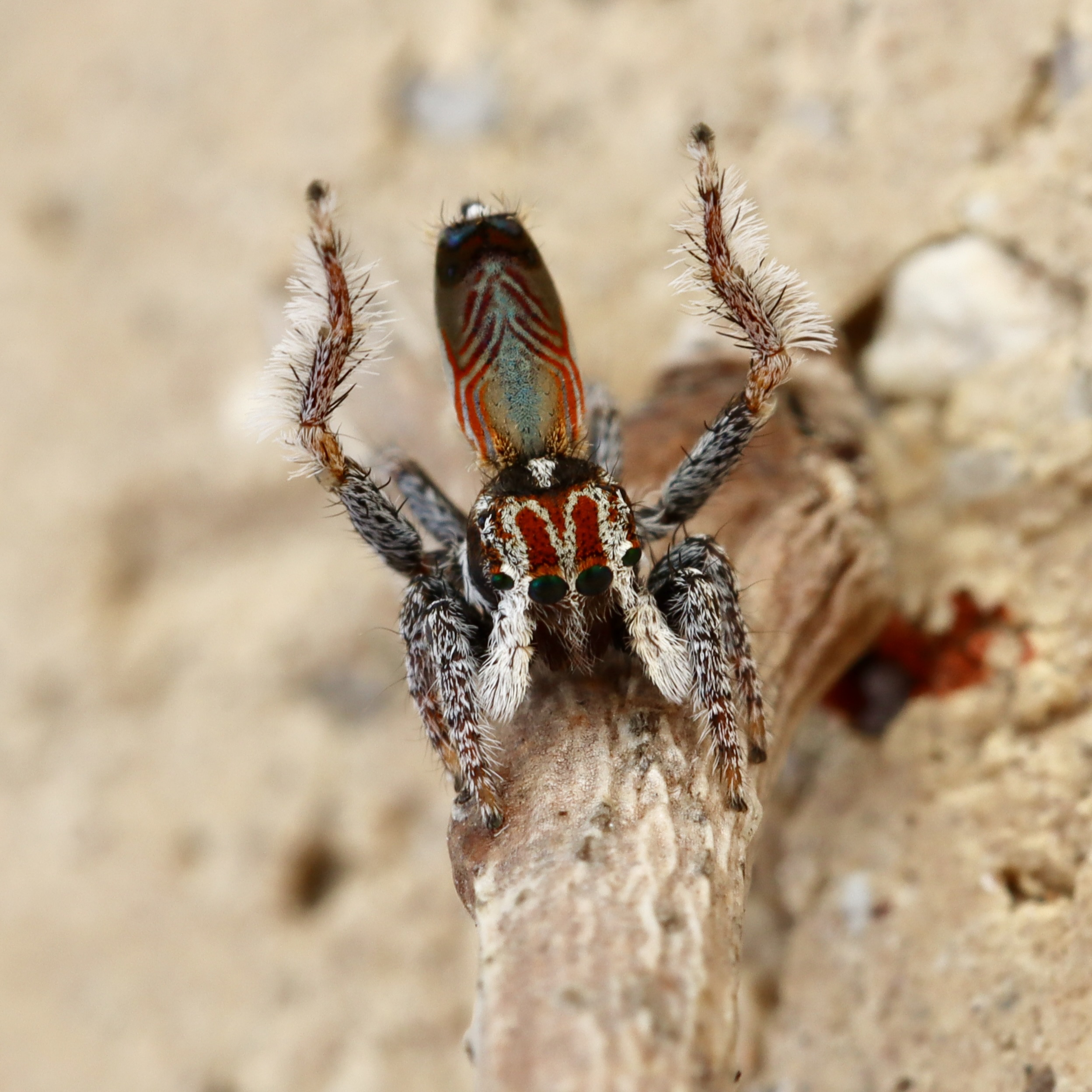
My research
Peacock spiders

The peacock spiders of Australia represent a series of recent and rapid radiations. The genus Maratus comprises over 100 species and its males are infamous for the remarkable visual and vibrational dances that they perform to attract females. This extreme sexual dimorphism, together with a lack of observable ecological differentiation between closely-related species, suggests the radiation is driven partly by sexual selection. I am combining multispectral imaging, vibratory measurements, behavioural experiments, population genetics, and comparative genomics in my peacock spider work.
Our work on peacock spiders is done as part of an international collaboration spanning Australia, the UK, the US, Germany, and Austria. We work alongside a large network of local experts and taxonomists in Australia, without whom our work would not be possible. We study and collect spiders on the ancestral and unceded lands of many First Nations communities.